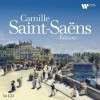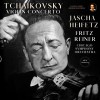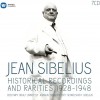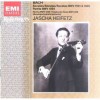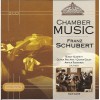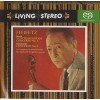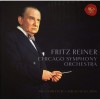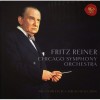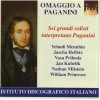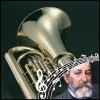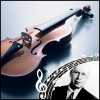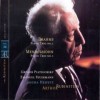| Voice/Instrument: | Violine |
Biography
Jascha Heifetz (English pronunciation: /ˈhaɪfɪts/, February 2 [O.S. January 20] 1901 – December 10, 1987) was a violinist, born in Vilnius, then Russian Empire, now Lithuania. He is widely regarded as one of the greatest violinists of all time.
Heifetz was born into a Jewish family in Vilnius, Lithuania, then part of the Russian Empire. His father, Reuven Heifetz, son of Elie, was a local violin teacher and served as the concertmaster of the Vilnius Theatre Orchestra for one season before the theatre closed down. Jascha took up the violin when he was three years old and his father was his first teacher. At five he started lessons with Ilya D. Malkin, a former pupil of Leopold Auer. He was a child prodigy, making his public debut at seven, in Kovno (now Kaunas, Lithuania) playing the Violin Concerto in E minor by Felix Mendelssohn. In 1910 he entered the Saint Petersburg Conservatory to study under Leopold Auer himself.
He played in Germany and Scandinavia, and met Fritz Kreisler for the first time in a Berlin private house together with other noted violinists in attendance. Kreisler, after accompanying the 12-year-old Heifetz at the piano in a performance of the Mendelssohn concerto, said to all present, "We may as well break our fiddles across our knees." Heifetz visited much of Europe while still in his teens. In April 1911, Heifetz performed in an outdoor concert in St. Petersburg before 25,000 spectators; there was such a sensational reaction that police officers needed to protect the young violinist after the concert. In 1914, Heifetz performed with the Berlin Philharmonic conducted by Arthur Nikisch. The conductor was very impressed, saying he had never heard such an excellent violinist.
Heifetz and his family left Russia in 1917, traveling by rail to the Russian far east and thence by ship to the United States, arriving in San Francisco.
On October 27, 1917, Heifetz played for the first time in the United States, at Carnegie Hall in New York, and became an immediate sensation. Fellow violinist Mischa Elman in the audience asked "Do you think it's hot in here?", whereupon Leopold Godowsky, in the next seat, imperturbably replied, "Not for pianists." The reviews by the New York critics were rapturous.
In 1917, Heifetz was elected as an honorary member of Phi Mu Alpha Sinfonia, the national fraternity for men in music, by the fraternity's Alpha chapter at the New England Conservatory of Music in Boston. As he was aged 16 at the time, he was perhaps the youngest person ever elected to membership in the organization. Heifetz remained in the country and became an American citizen in 1925. When he told admirer Groucho Marx he had been earning his living as a musician since the age of seven, Groucho answered, "And I suppose before that you were just a bum."
Heifetz is considered to be one of the finest violinists of all time. Heifetz's technical command of his instrument -- his physical ability to play the violin with stunning precision -- is regarded by many critics as unequaled. That physical control enabled Heifetz to produce a distinctive tone quality, intense and shimmering, that came to be regarded as his trademark. Yet, from time to time his near-perfect technique and conservative stage demeanor caused some critics to accuse him of being overly mechanical, even cold. Virgil Thomson called Heifetz's style of playing "silk underwear music", a term he did not intend as a compliment. Other critics argue that he infused his playing with feeling and reverence for the composers' intentions. His style of playing was highly influential in defining the way modern violinists approach the instrument. His use of rapid vibrato, emotionally charged portamento, fast tempos, and superb bow control coalesced to create a highly distinctive sound that make Heifetz's playing instantly recognizable to aficionados. The violinist Itzhak Perlman, who himself is noted for his rich warm tone and expressive use of portamento, describes Heifetz's tone as like "a tornado" because of its emotional intensity. Perlman also said that Heifetz preferred to be recorded relatively close to the microphone; as a result, one would perceive a somewhat different tone quality when listening to Heifetz during a concert hall performance as opposed to a recording.
In creating his sound, Heifetz was very particular about his choice of strings. He used a silver wound Tricolore gut g-string, plain gut unvarnished D and A strings, and a Goldbrokat steel E string medium including clear Hill brand rosin sparingly. Heifetz believed that playing on gut strings was important in rendering an individual sound.
Heifetz made his first recordings in Russia during 1910–11, while still a student of Leopold Auer. The existence of these recordings was not widely known until after Heifetz's death, when several sides (most notably Franz Schubert's L'Abeille) were reissued on an LP included as a supplement to The Strad magazine.
Shortly after his Carnegie Hall debut on November 7, 1917, Heifetz made his first recordings for the Victor Talking Machine Company; he would remain with Victor and its successor, RCA Victor, for most of his career. For several years, in the 1930s, Heifetz recorded primarily for HMV in the UK because RCA cut back on classical recordings during the Great Depression; these discs were issued in the US by RCA Victor. Heifetz often enjoyed playing chamber music. Various critics have blamed his limited success in chamber ensembles to the fact that his artistic personality tended to overwhelm his colleagues. Some notable collaborations include his 1941 recordings of piano trios by Beethoven, Schubert, and Brahms with cellist Emanuel Feuermann and pianist Arthur Rubinstein as well as a later collaboration with Rubinstein and cellist Gregor Piatigorsky, with whom he recorded trios by Maurice Ravel, Tchaikovsky, and Felix Mendelssohn. Both formations were sometimes referred to as the Million Dollar Trio.
He recorded the Beethoven Violin Concerto in 1940 with the NBC Symphony Orchestra conducted by Arturo Toscanini, and again in stereo in 1955 with the Boston Symphony Orchestra conducted by Charles Munch. A live performance from April 9, 1944, of Heifetz playing the Mendelssohn Violin Concerto, again with Toscanini and the NBC Symphony, has also been released.
He performed and recorded Erich Wolfgang Korngold's Violin Concerto, at a time when many classical musicians avoided Korngold's music because they did not consider him a "serious" composer after he wrote many film scores for Warner Brothers.
Heifetz commissioned a number of pieces, perhaps most notably the Violin Concerto by William Walton. He also arranged a number of pieces, such as Hora Staccato by Grigoraş Dinicu, a Romanian whom Heifetz is rumoured to have called the greatest violinist he had ever heard. Heifetz also played and composed for the piano; he performed mess hall jazz for soldiers at Allied camps across Europe during the Second World War, and under the alias Jim Hoyl he wrote a hit song, "When You Make Love to Me (Don't Make Believe)", which was sung by Bing Crosby.
From 1944 to 1946, largely a result of the American Federation of Musicians recording ban (which actually began in 1942), Heifetz went to American Decca Records to make recordings because Decca settled with the union in 1943, well before RCA Victor resolved their dispute with the musicians. He recorded primarily short pieces, including his own arrangements of music by George Gershwin and Stephen Foster; these were pieces he often played as encores in his recitals. He was accompanied on the piano by Emanuel Bay or Milton Kaye. Among the more uncommon discs featured one of Decca's most popular artists, Bing Crosby, in the "Lullaby" from Benjamin Godard's opera Jocelyn and Where My Caravan Has Rested (arranged by Heifetz and Crosby) by Hermann Lohr (1872–1943); Decca's studio orchestra was conducted by Victor Young in the July 27, 1946, session. Recorded mostly in small studios, the digitally remastered performances (issued by MCA) have remarkably clear, high fidelity sound. However, Heifetz soon returned to RCA Victor, where he continued to make recordings until the early 1970s.
Returning to RCA in 1946, Heifetz continued to make a number of 78-rpm discs for the company, including solo, chamber, and orchestral recordings.
RCA began releasing long-playing recordings in 1950, including concertos taken from 78-rpm masters. The company began to make new high fidelity recordings with Heifetz, primarily with the Boston Symphony Orchestra under Charles Munch and the Chicago Symphony Orchestra under Fritz Reiner. Beginning in early 1954, most of RCA's classical sessions were also taped on triple track stereophonic tape recorders. These were eventually issued in the "Living Stereo" series, which began in 1958. RCA later reissued the recordings on a series of CDs. While many earlier Heifetz recordings used close miking, which led to a dry sound, the post 1954 RCA concerto recordings have somewhat more distant and effective miking, creating a more effective concert ambience that shows Heifetz's tone to excellent advantage.
A 2000 two-CD RCA compilation titled Jascha Heifetz – The Supreme gives a sampling of Heifetz's major recordings, including the 1955 recording of Brahms's Violin Concerto with Reiner and the Chicago Symphony Orchestra; the 1957 recording of Tchaikovsky's Violin Concerto (with the same forces); the 1959 recording of Sibelius's Violin Concerto with Walter Hendl and the Chicago Symphony Orchestra; the 1961 recording of Max Bruch's Scottish Fantasy with Sir Malcolm Sargent and the New Symphony Orchestra of London; the 1963 recording of Glazunov's A minor Concerto with Walter Hendl and the RCA Victor Symphony Orchestra (drawn from New York musicians); the 1965 recording of George Gershwin's Three Preludes (transcribed by Heifetz) with pianist Brooks Smith; and the 1970 recording of Bach's unaccompanied Chaconne from the Partita No. 2 in D minor.
On his third tour to Israel in 1953, Heifetz included in his recitals the Violin Sonata by Richard Strauss. At the time, Strauss was considered by many to be a Nazi composer, and his works were unofficially banned in Israel along with those of Richard Wagner. Despite the fact that the Holocaust had occurred less than ten years earlier and a last-minute plea from the Israeli Minister of Education, the defiant Heifetz argued, "The music is above these factors ... I will not change my program. I have the right to decide on my repertoire." Throughout his tour the performance of the Strauss sonata was followed by dead silence.
Heifetz was attacked after his recital in Jerusalem outside his hotel by a young man who struck Heifetz's violin case, Heifetz resorting to using his right hand to protect his priceless violins from the crowbar. As the attacker started to flee, Heifetz alerted his companions, who were armed, "Shoot that man, he tried to kill me." The attacker escaped and was never found. The attack has since been attributed to the Kingdom of Israel terrorist group. The incident made headlines in the press and Heifetz defiantly announced that he would not stop playing the Strauss. Threats continued to come, however, and he omitted the Strauss from his next recital without explanation. His last concert was cancelled after his swollen right hand began to hurt. He left Israel and did not return until 1970.
Soviet musicians considered Heifetz and his teacher Leopold Auer as traitors to their home country for emigrating to the US, and Heifetz especially because of his very young age. Meanwhile, musicians who remained, such as David Oistrakh, were seen as patriots. Heifetz greatly criticized the Soviet regime; he condemned the International Tchaikovsky Competition for being biased against Western competitors. During the Carl Flesch Competition in London, Oistrakh tried to persuade Erick Friedman, Heifetz's star student, to enter the Tchaikovsky Competition, of which he was the principal juror. Hearing of this, Heifetz strongly advised against it, warning Friedman, "You will see what will happen there." Consequently, the competition received international outrage after Friedman, already a seasoned performer and recording artist for RCA, who had performed with the Chicago Symphony Orchestra, London Symphony Orchestra, and the Boston Symphony Orchestra, among many others, placed sixth behind players who had yet to establish their potent careers. Joseph Szigeti later informed Heifetz himself that he had given his student top scores.
After an only partially successful operation on his right shoulder in 1972, Heifetz ceased giving concerts and making records. Although his prowess as a performer remained intact and he continued to play privately until the end, his bow arm was affected and he could never again hold the bow as high as before.
Heifetz taught the violin extensively, holding masterclasses first at UCLA, then at the University of Southern California, where the faculty included renowned cellist Gregor Piatigorsky and violist William Primrose. For a few years in the 1980s he also held classes in his private studio at home in Beverly Hills. His teaching studio can be seen today in the main building of the Colburn School, where it is now used for masterclasses and serves as an inspiration to the students there. During his teaching career Heifetz taught, among others, Erick Friedman, Pierre Amoyal, Rudolf Koelman, Endre Granat,Eugene Fodor, Paul Rosenthal, and Ayke Agus.
It was rumored that Heifetz was such a strict discipline observer that the main gate of his Beverly Hills home was closed sharp at the appointment time of his classes to shut out students who arrived late. Heifetz died at Cedars-Sinai Medical Center in Los Angeles, California in December 1987.
Heifetz owned the 1714 Dolphin Stradivarius, the 1731 "Piel" Stradivarius, the 1736 Carlo Tononi, and the 1742 ex David Guarneri del Gesù, the last of which he preferred and kept until his death. The Dolphin Strad is currently owned by the Nippon Music Foundation. The Heifetz Tononi violin used at his 1917 Carnegie Hall debut was left in his will to Sherry Kloss, Master-Teaching Assistant to Heifetz, with "one of my four good bows" (Violinist/author Kloss wrote "Jascha Heifetz Through My Eyes" and is a co-founder of the Jascha Heifetz Society). The famed Guarneri is now in the San Francisco Legion of Honor Museum, as instructed by Heifetz in his will, and may only be taken out and played "on special occasions" by deserving players. The instrument has recently been on loan to San Francisco Symphony's concertmaster Alexander Barantschik, who featured it in concertos with Andrei Gorbatenko and the San Francisco Academy Orchestra in 2006. In 1989, Heifetz received a posthumous Grammy Lifetime Achievement Award.
Heifetz was married in 1928 to the silent motion picture actress Florence Vidor, ex-wife of King Vidor, whose seven year old daughter, Suzanne, Heifetz adopted. The couple had two more children, Josefa (born 1930) and Robert (1932–2001) before divorcing in 1945. In 1947, Heifetz took a sabbatical during which he married Frances Spiegelberg, with whom he had another son, Joseph. The second marriage ended in divorce in 1962.
Heifetz's son Jay is a professional photographer. He was formerly head of marketing for the Los Angeles Philharmonic and Hollywood Bowl, and the Chief Financial Officer of Paramount Pictures' Worldwide Video Division. He lives and works in Fremantle, Western Australia. Heifetz's daughter, Josefa Heifetz Byrne, is a lexicographer, the author of the Dictionary of Unusual, Obscure and Preposterous Words.
Heifetz's grandson Danny Heifetz is an accomplished drummer/percussionist and has played with Mr. Bungle, Dieselhed, Secret Chiefs 3 and Link Wray.
His extended family was active in Los Angeles progressive political circles in addition to music. His niece Frances Heifetz was an artist who married Kalman Bloch, the first chair clarinetist of the L.A. Philharmonic for over 40 years. Their daughter Michele Zukovsky is the current co-principal clarinetist for the L.A. Philharmonic. Their son Gregory Bloch (d.1987) was a noted violinist and member of the Italian rock group PFM as well as the American progressive rock groups It's a Beautiful Day and String Cheese.
Jascha Heifetz's great nephew, Stefano Bloch, is a music geographer at the University of Minnesota and lives in Los Angeles.
Heifetz had a difficult personality, and has even been described as "misanthropic". He tended to drive away the very people who could have been his most trusted allies. His own childhood had been difficult; his father was an extremely stern man who, even after Jascha had become the family's sole breadwinner, would still roundly criticise every performance.
Heifetz played a featured role in the movie They Shall Have Music (1939) directed by Archie Mayo and written by John Howard Lawson and Irmgard von Cube. He played himself, stepping in to save a music school for poor children from foreclosure. He later appeared in the 1947 film, Carnegie Hall, performing an abridged version of the first movement of Tchaikovsky's violin concerto, with the orchestra led by Fritz Reiner, and consoling the star of the picture, who had watched his performance. Heifetz later recorded the complete Tchaikovsky concerto with Reiner and the Chicago Symphony Orchestra as one of RCA Victor's "Living Stereo" discs. In 1951, he appeared in the film Of Men and Music. In 1962. he appeared in a televised series of his master classes, and, in 1971, Heifetz on Television aired, an hour-long color special that featured the violinist performing a series of short works, the "Scottish Fantasy" by Max Bruch, and the Chaconne from the Partita No. 2 by Bach. Heifetz even conducted the orchestra, as the surviving video recording documents.
The most recent film featuring Heifetz, Jascha Heifetz: God's Fiddler, premiered on April 16th, 2011 at the Colburn School of Music. It is "The only film biography of the world's most renowned violinist, featuring family home movies in Los Angeles and all over the world."
Compositions
Discography
Composers' compositions
Charles Camille Saint-Saëns
Introduction & Rondo Capriccioso (Heifetz, Barbirolli)Symphony / Symphonic music
Op.28

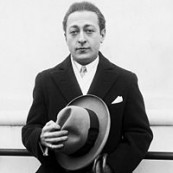
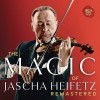
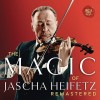
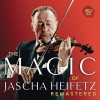
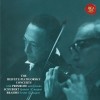




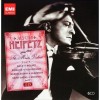
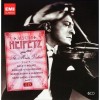
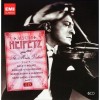
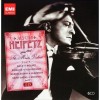
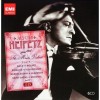
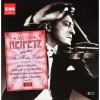
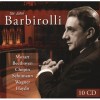
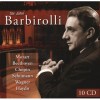
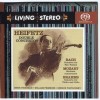
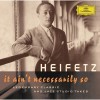
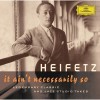
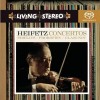
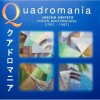
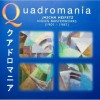
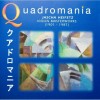
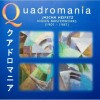

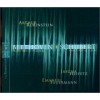
![The Heifetz Collection, Volume 7 [2 CD]](http://static.classicalm.com/repository/disk-cover/small/927-img1316977566109649.jpg)
![The Heifetz Collection, Volume 8 [2 CD]](http://static.classicalm.com/repository/disk-cover/small/929-img1316982090166364.jpg)
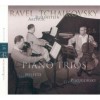
![The Heifetz Collection, Volume 9 [2 CD]](http://static.classicalm.com/repository/disk-cover/small/935-img1316984135213633.jpg)
![The Heifetz Collection, Volume 10 [2 CD]](http://static.classicalm.com/repository/disk-cover/small/937-img1317064478845589.jpg)
![The Heifetz Collection, Volumes 11 - 15 [5 CD]](http://static.classicalm.com/repository/disk-cover/small/939-img1317071875601277.jpg)
![The Heifetz Collection, Volume 16 [3 CD]](http://static.classicalm.com/repository/disk-cover/small/941-img1317240682602747.jpg)
![The Heifetz Collection, Volume 17 [2 CD]](http://static.classicalm.com/repository/disk-cover/small/943-img1317242846317529.jpg)
![The Heifetz Collection, Volume 18 [3 CD]](http://static.classicalm.com/repository/disk-cover/small/945-img1317246561169536.jpg)
![The Heifetz Collection, Volume 19 [2 CD]](http://static.classicalm.com/repository/disk-cover/small/947-img1317413695600051.jpg)

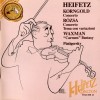
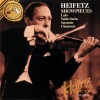
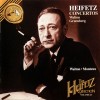
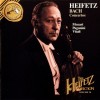
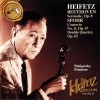
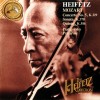
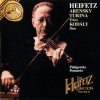
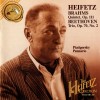
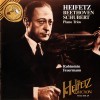
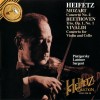
![The Heifetz Collection, Volume 1 [3 CD ]](http://static.classicalm.com/repository/disk-cover/small/715-img1315088819334029.jpg)
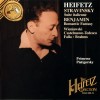
![The Heifetz Collection, Volume 2 [3 CD]](http://static.classicalm.com/repository/disk-cover/small/717-img1315129517717299.jpg)
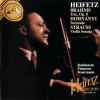
![The Heifetz Collection, Volume 3 [2 CD]](http://static.classicalm.com/repository/disk-cover/small/719-img1315174118757085.jpg)
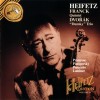
![The Heifetz Collection, Volume 4 [2 CD]](http://static.classicalm.com/repository/disk-cover/small/721-img1315251228394533.jpg)
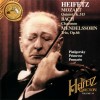
![The Heifetz Collection, Volume 5 [2 CD]](http://static.classicalm.com/repository/disk-cover/small/723-img1315251789683087.jpg)
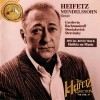
![The Heifetz Collection, Volume 6 [2 CD]](http://static.classicalm.com/repository/disk-cover/small/725-img1315427995644122.jpg)
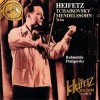
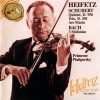
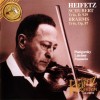
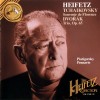
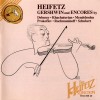
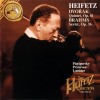
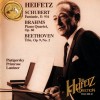
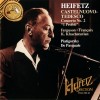
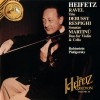
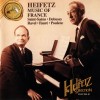
![The Heifetz Collection, Volume 46 [2 CD]](http://static.classicalm.com/repository/disk-cover/small/1001-img1318023469472305.jpg)
